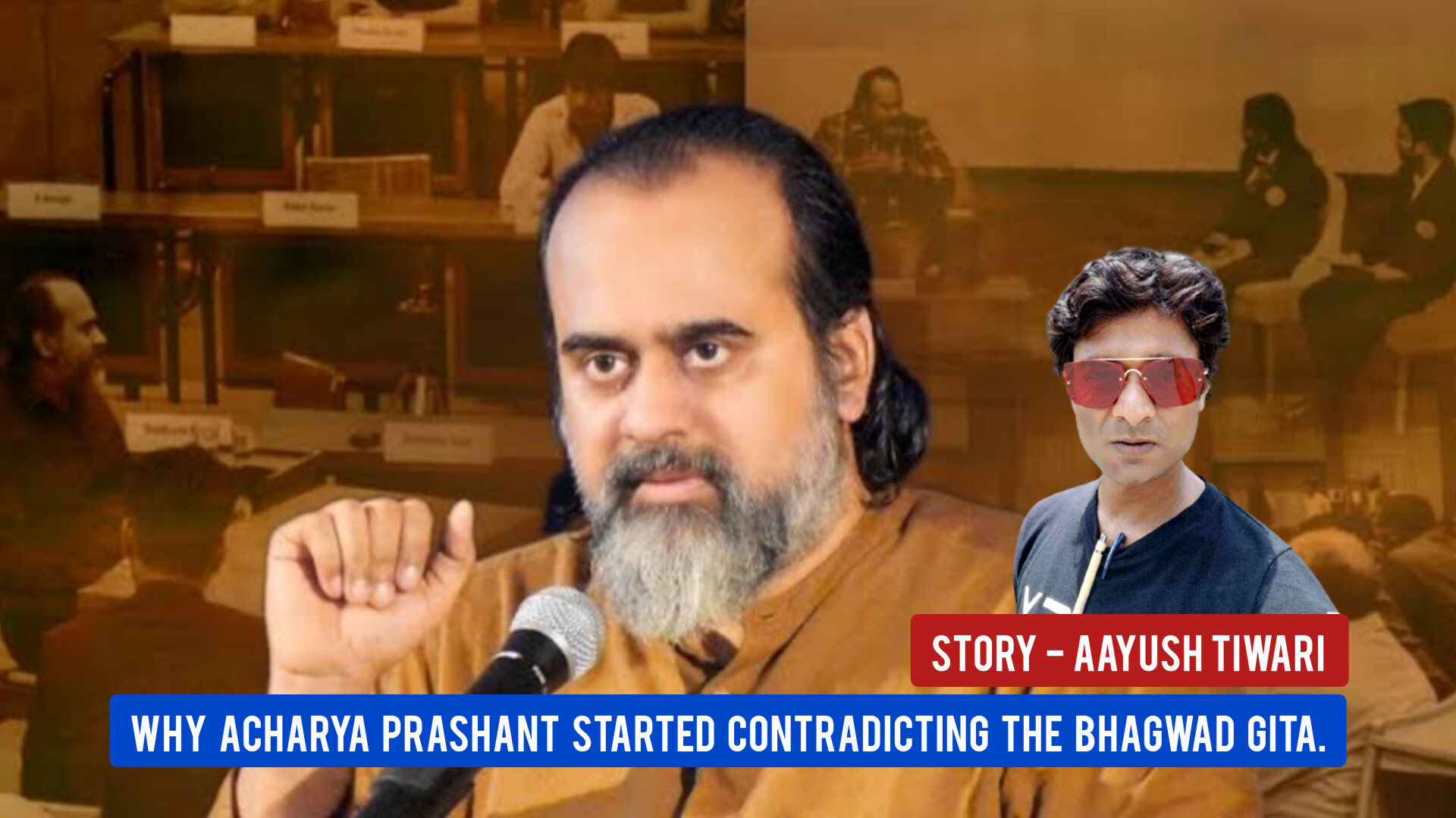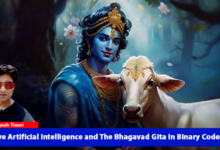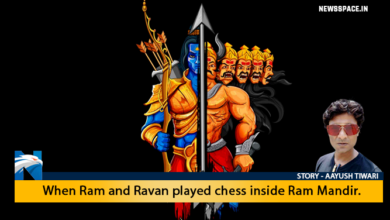
|
Getting your Trinity Audio player ready...
|
त्राहिमाम शरणागात् म : समर्पण का विज्ञान : (3:30 )
Trahimam Sharnagatam : The Science Of Surrender.
It’s amazing how Acharya Prashant in one of his most viewed videos made these golden lines of the Bhagwad Gita, chapter 3 verse 30 tune with the pulse of the nation.
“Nirashi (Unfazed )
Nirmamo (Detached)
Bhutva ( prepared )
YUDHHASV (Challenging)
Vigat- jwar ( Relaxed)
As you realize how brute is this mortality if you have faced death of someone you loved. If you can see clearly everything we know slipping into the big crunch every second :
THEN – “Trahimam Trahimam” screams the sense organs, mun, buddhi, chitt, ahankar simultaneously.
After realizing this ‘ALAS’ (Trahimam) the individual had to seek refuge in something eternal, else suicide is the only option left. This realization of trahimam is the existential crisis that gobbled up an uncountable number of multi talented poets, rockstars, philosophers and artists. Rather than dragging year after year they preferred to end the mess up in a shot and ended up ending up themselves.
However if the energy generated by this tormenting realization can be channelized up the spine by an absolute surrender to the non dual that our mind is not equipped to decipher.
This surrender is based on an absolute understanding of the nothingness around and with this understanding a scientific approach is needed to surrender body and mind in the holy fire called Yagya in the Bhagawad Gita.
As I sit here reflecting on the concept of surrender, I am filled with a sense of peace and understanding. The idea of completely letting go and giving oneself up to a higher purpose is a difficult one to grasp, yet it is a fundamental aspect of many spiritual teachings. One such teaching that deeply resonates with me is the Bhagwad Gita’s chapter 3, verse 30 first line (before nirashi nirmamo )bridging with ‘Trahimam Sharnagatam’ – The Science of Surrender.
But one thing has to reach till the ears of IIT/IIM pass out and ex civil servant Acharya Prashant. That is the verse 29, chapter three of the Bhsgwad Gita. The lord clearly says that if a mediocre mind is engrossed in pursuits like naam jap, meditation, bhajan etc then he/she must not be refuted by a jeewan mukt, or the wise men.
Acharya Prashant just like Osho believes in disturbing the conditioned minds engrossed in such scripture guided tasks and channelize them towards the gyan yog, karma yog and sankhya yog. This can be very discouraging for the bhakti yog marg and can shake the belief on meditation and hath yoga.
This will be discussed if needed but this blog is just a humble appeal to Acharya Prashant to revise chapter : 3 verse 28, 29 again.
The approach should be to end up the debate between Determinism vs Free Will for an absolute clarity of all these three paths : Gyan Yog, Bhakti Yog and Karma yog. GPT 4 should be fed upon these lines based on this debate to train it with the synergising vedanta and the quantum mechanics for betterment of mankind.
“This verse talks about the science of surrender, It speaks of the qualities one must possess in order to truly surrender – Nirashi, Nirmamo, and Bhutva. These words hold a profound meaning that I have come to understand through my own experiences.
Nirashi refers to being without hope or expectations. It is the surrender of our ego and our attachment to the outcome of our actions. As humans, we often strive for results and success, only to be disappointed when they do not pan out the way we wanted them to. By giving up the need to control and manipulate the outcome, we can find true freedom and peace.
Nirmamo means being without any sense of possessiveness and ownership. In this materialistic world, we often have a strong sense of attachment to people, relationships, and possessions. But as the Gita teaches, true surrender means letting go of all of these attachments and recognizing that everything is transient and temporary. We are merely custodians of the things we have in our life and they do not define us.
Bhutva signifies becoming one with existence. By surrendering to a higher power, we realize that we are a part of a greater whole and not separate beings in the universe. This understanding allows us to break free from the limitations of our own mind and connect with something much larger and powerful.
Through this verse, the Gita teaches us that true surrender is the end of the endless debate of antiquity : Determinism vs Free will
It is not about giving up, but about reaching a state of complete harmony with the super determinist . It is about understanding that we are not in control of everything and finding peace in that acceptance of gratitude that under determinism an infinite scope of free will exists being born in the human body.
The Science of Surrender is not an easy concept to fully grasp and implement in our daily lives. It requires practice, patience, and faith. But by incorporating its teachings into our lives, we can find a sense of inner peace and fulfillment that goes beyond the materialistic pursuits of this world. ‘Trahimam Sharnagatam’ – end the debate of free will vs determinism as both are one. Non dual.”
If you just start drinking these verses You will understand that the most herculean debate of the antiquity : ie free will vs determinism are same. Non dual, the advait vedanta. J. Krishnamurthy puts it so beautifully : “The observer is the observed)






उल्टा नाम जापत जग जाना
वाल्मीकि भये ब्रह्म समाना l
कलयुग केवल नाम आधारा
सुमिर सुमिर नर उतरेह पारा l
Why #AcharyaPrashant refutes the value of Naam Jap even if underpinned by ignorance?
http://www.newsspace.in